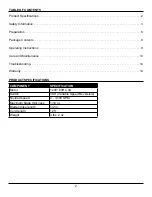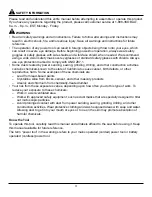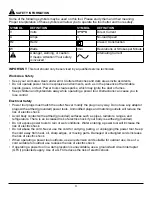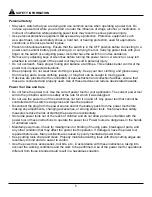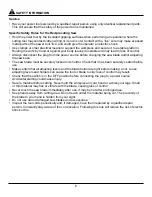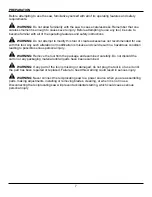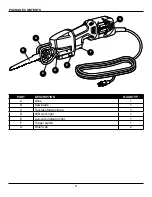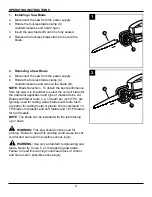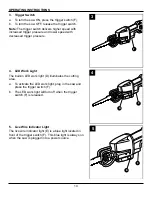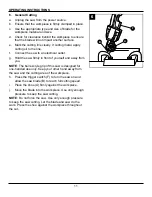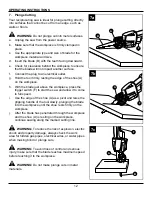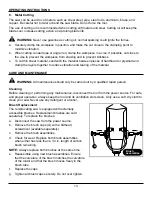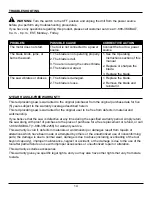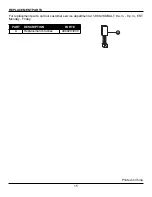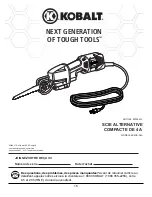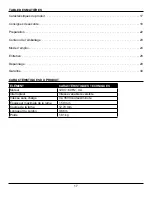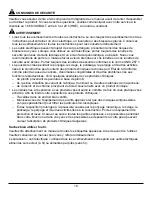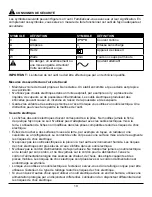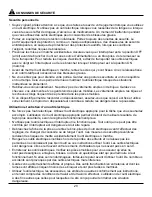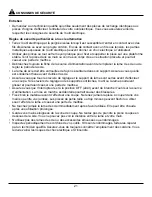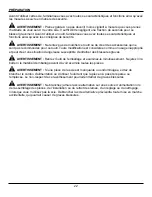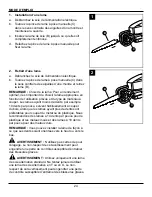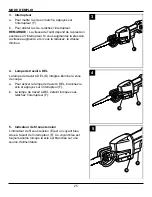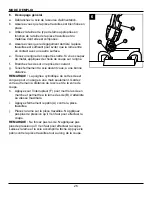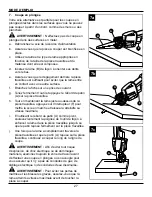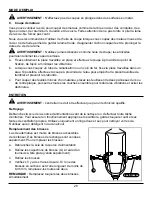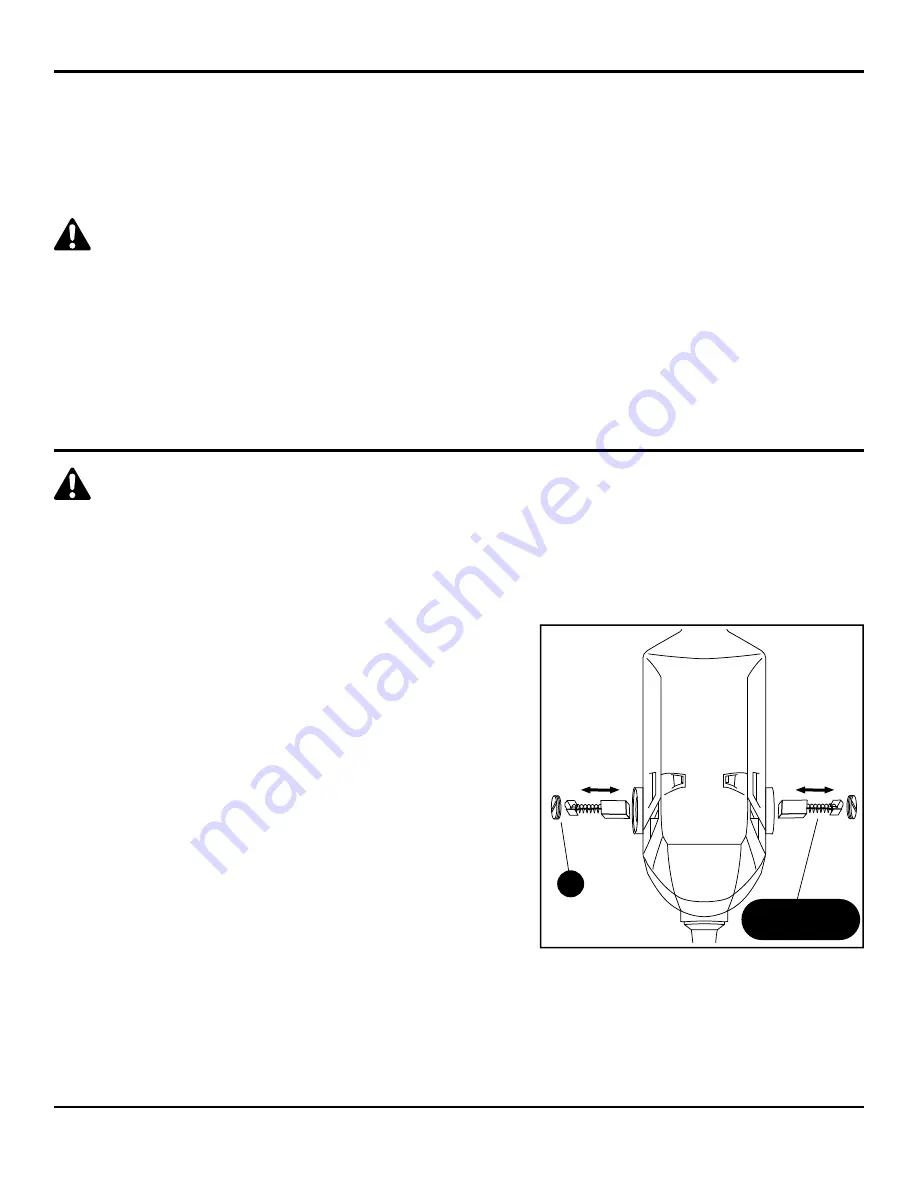
13
oPeraTinG insTruCTions
8. Metal Cutting
The saw can be used to cut metals, such as sheet steel, pipe, steel rods, aluminum, brass, and
copper. Be careful not to twist or bend the saw blade. Do not force the tool.
The use of cutting oil is recommended when cutting soft metals and steel. Cutting oil will keep the
blade cool, increase cutting action, and prolong blade life.
WarninG:
Never use gasoline as cutting oil; normal sparking could ignite the fumes.
a. Securely clamp the workpiece in position, and make the cut close to the clamping point to
minimize vibration.
b . When cutting conduit pipe or angle iron, clamp the workpiece in a vise. If possible, cut close to
the vise to prevent the workpiece from shaking and to prevent kickback.
c . To cut thin sheet material, sandwich the material between pieces of hardboard or plywood and
clamp the layers together to reduce vibration and tearing of the material.
Care and mainTenanCe
WarninG:
All maintenance should only be carried out by a qualified repair person.
Cleaning
Before cleaning or performing any maintenance, disconnect the tool from the power source. For safe
and proper operation, always keep the tool and its ventilation slots clean. Only use a soft, dry cloth to
clean your saw. Never use any detergent or alcohol.
Brush Replacement
The reciprocating saw is equipped with externally
accessible brushes. Replacement brushes are sold
separately. To replace the brushes:
a. Disconnect the saw from the power source.
b . Remove the brush caps (G) with a flathead
screwdriver (available separately).
c . Remove the brush assemblies.
d . Check for wear. Replace both brush assemblies
when either has less than a 1/4 in. length of carbon
brush remaining.
noTe:
Always replace both brushes at the same time.
e . Reassemble using new brush assemblies. Ensure
that the curvature of the brush matches the curvature
of the motor and that the brush moves freely in the
brush tube.
f. Replace the caps.
g. Tighten all brush caps securely. Do not over tighten.
Brush
assemblies
G


